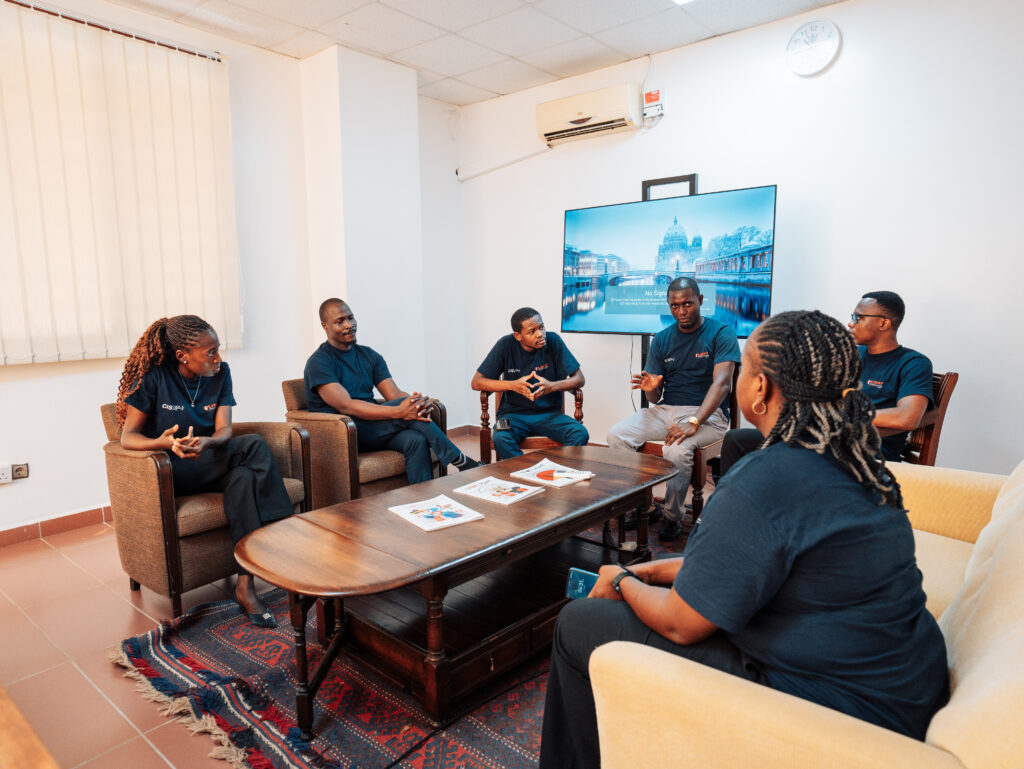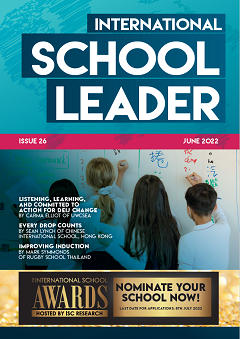In many international schools, middle leadership often lacks the formal structure and sustainable opportunities necessary for meaningful impact. Leadership responsibilities can become concentrated at the senior level, limiting the growth and engagement of aspiring leaders. At Light International School Mombasa, we sought to challenge this model by introducing a structured, committee-based leadership system that empowers staff across departments to lead, collaborate, and contribute to whole-school improvement.
In today’s educational landscape, empowering middle leaders has become essential to effective school management. At our school, this vision comes to life through the structured operation of leadership committees – each aligned with our performance appraisal system based on the Cambridge School Leader Standards, the Cambridge Professional Development Qualification (PDQ) in Educational Leadership, and the School Improvement and Development Plan (SIDP).
A Strategic Model for Leadership Development
Committees are integral to driving strategic development while fostering a school culture of collaboration, innovation, and social capital. They provide meaningful platforms for professional growth, enabling teachers to lead initiatives, build networks, and contribute to strategic planning. These professional ties deepen collaboration and enrich the school’s social capital – strengthening connections not only within departments but across the wider school community.
Our committee structure is both comprehensive and inclusive, covering a broad range of functional and developmental areas that support strategic growth and whole-school engagement. These committees include:
- Alumni and Public Relations
- Student Council and Service Learning
- Events and Media
- Wellbeing and Value-Based Education
- Climate Change Education and Enrichment Programs
- Professional Development and Child Protection
- Internship and Project-Based Education
This wide scope ensures that all key areas of school life are collaboratively led and strategically aligned, with each committee playing a vital role in shaping the school’s vision and impact.
Each committee is led by a nominated coordinator and includes 5-6 members. Some staff members participate in up to four committees, which allows for cross-pollination of ideas and alignment between initiatives. This overlap promotes a whole-school view and cultivates a strong sense of professional identity and belonging.
Accountability and Goal Setting
Each committee is responsible for developing a SMART year plan that includes key performance indicators (KPIs), skill-building targets, and project outlines. These plans are reviewed and approved by the Senior Leadership Team at the start of the academic year, revisited at mid-year review, and formally reported at year-end. This clear structure not only promotes accountability but also allows teams to measure their collective impact.
The Cambridge PDQ framework serves as the foundation for leadership development within committees. Through guided learning, reflective practice, and real-time application, committee members are able to align their work with leadership theory while driving practical outcomes. For example, teams have designed and delivered service-learning projects aligned with both curriculum standards and school development goals.
A Culture of Continuous Improvement
Our performance management cycle reinforces committee work by emphasising regular review and transparent reporting. Committees meet weekly and submit monthly updates, which feed into their final impact reports. This continuous cycle of feedback and reflection creates a dynamic culture of improvement, while also preparing committee leaders for more senior leadership roles.

Source: Light International School Mombasa
Committees are also drivers of collaboration. Many projects extend beyond the school, involving partnerships with external organisations such as the United Nations Youth Association of Kenya, Kenya Red Cross, and Rotary International Rotary Club of Mombasa. These partnerships enrich the student experience and broaden our global outlook while further developing staff leadership and project management skills.
Measuring Social Capital
To evaluate the effectiveness of our committees and the growth of middle leadership, we utilise a social capital diagnostic tool. This approach, rooted in organisational network analysis, maps the professional connections between staff, highlighting the strength of collaboration and identifying isolated members. It distinguishes between actual ties (current connections) and potential ties (aspirational connections), allowing us to assess the current network and envision what stronger integration might look like.
The data has proven instrumental in improving both leadership development and committee functioning. For instance, a recent analysis showed a significant increase in mutual ties and embedded professional clusters – evidence that committees are successfully fostering deeper collaboration and reducing isolation.
We also track the network ratings of committee leaders, evaluating how their influence and trust levels evolve over time. This not only helps in identifying emerging leaders but also in customizing mentoring opportunities and adjusting team compositions. In essence, this analysis helps us move from anecdotal impressions to measurable indicators of leadership impact.
“Committees provide a platform for voices to be heard and for staff to lead meaningful change. This culture of inclusion has a direct impact on retention, staff satisfaction, and collective ownership of the school’s vision.”
Supporting Strategic Development and Accreditation
Beyond day-to-day operations, committees are also a critical component in preparing for and maintaining our international accreditations. Our school is proudly accredited by the Council of International Schools (CIS), the Council of British International Schools (COBIS), and the Value-based Education Quality Mark (VbE). Many of the documents, reflections, and initiatives required for these accreditations are spearheaded by committee teams – making these groups central to long-term school improvement and sustainability.
Enhancing Belonging and Reducing Workload
Another important benefit is how the committee structure helps reduce professional isolation and builds a sense of community. In many schools, teachers can feel disconnected from broader decision-making. Committees provide a platform for voices to be heard and for staff to lead meaningful change. This culture of inclusion has a direct impact on retention, staff satisfaction, and collective ownership of the school’s vision.
By combining previously separate functions – such as planning, community engagement, and internal development – into structured committee work, we’ve also reduced redundancy and workload. The time saved and clarity gained has allowed teachers to focus more on innovation and less on navigating disconnected systems.
A Model for Modern Leadership
The structured operation of committees has transformed our approach to middle leadership. By blending theoretical learning from the Cambridge PDQ programme with practical, school-based application, staff develop confidence, strategic awareness, and leadership capability. This model ensures that professional development is not abstract but embedded in the everyday life of the school.
As we continue to innovate in teaching and learning, these committees remain central to our leadership strategy. They not only empower educators to shape the direction of the school but also cultivate the social capital and collaborative culture necessary for sustainable change. At Light International School Mombasa, leadership is not confined to titles: it’s distributed, data-informed, and purpose-driven.
Practical Tips for School Leaders
- Align with Professional Development Frameworks:
Connect committee work with existing leadership development programmes like the Cambridge PDQ to reinforce real-time application of leadership theory. - Set SMART Annual Goals:
Require each committee to establish clear, measurable objectives tied to the school’s development plan to ensure direction and accountability. - Promote Cross-Departmental Collaboration:
Rotate committee membership and encourage co-leadership to build school-wide ownership, shared understanding, and professional trust. - Integrate Committee Work with Strategic Planning:
Link committee outputs directly to SIDP priorities, accreditation processes, and reporting systems to maximise long-term impact.
By Ildar Iliazov

Ildar Iliazov is the Principal of Light International School Mombasa. He is also a CIS Team Evaluator and Cambridge PDQ Programme Leader. You can connect with him via LinkedIn.

